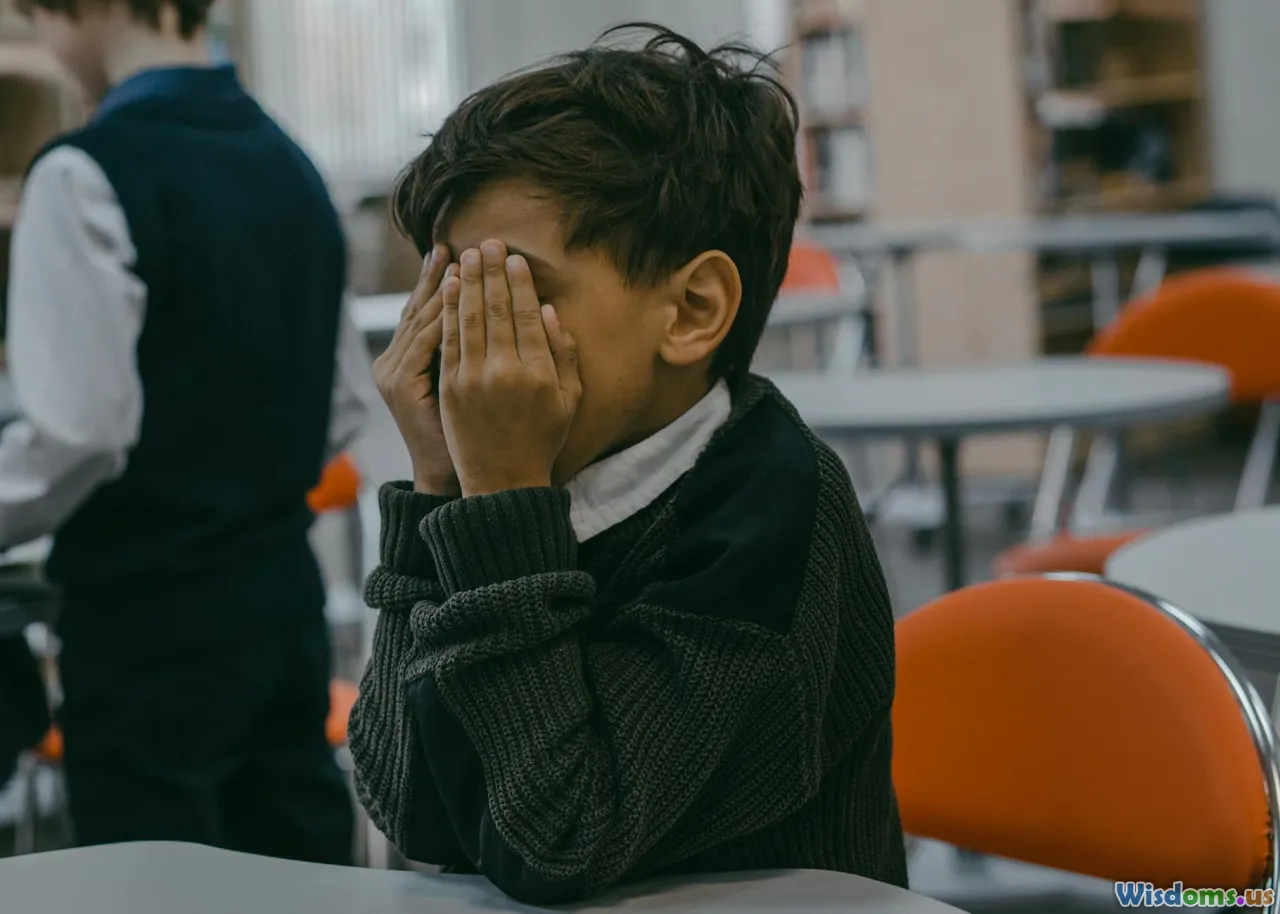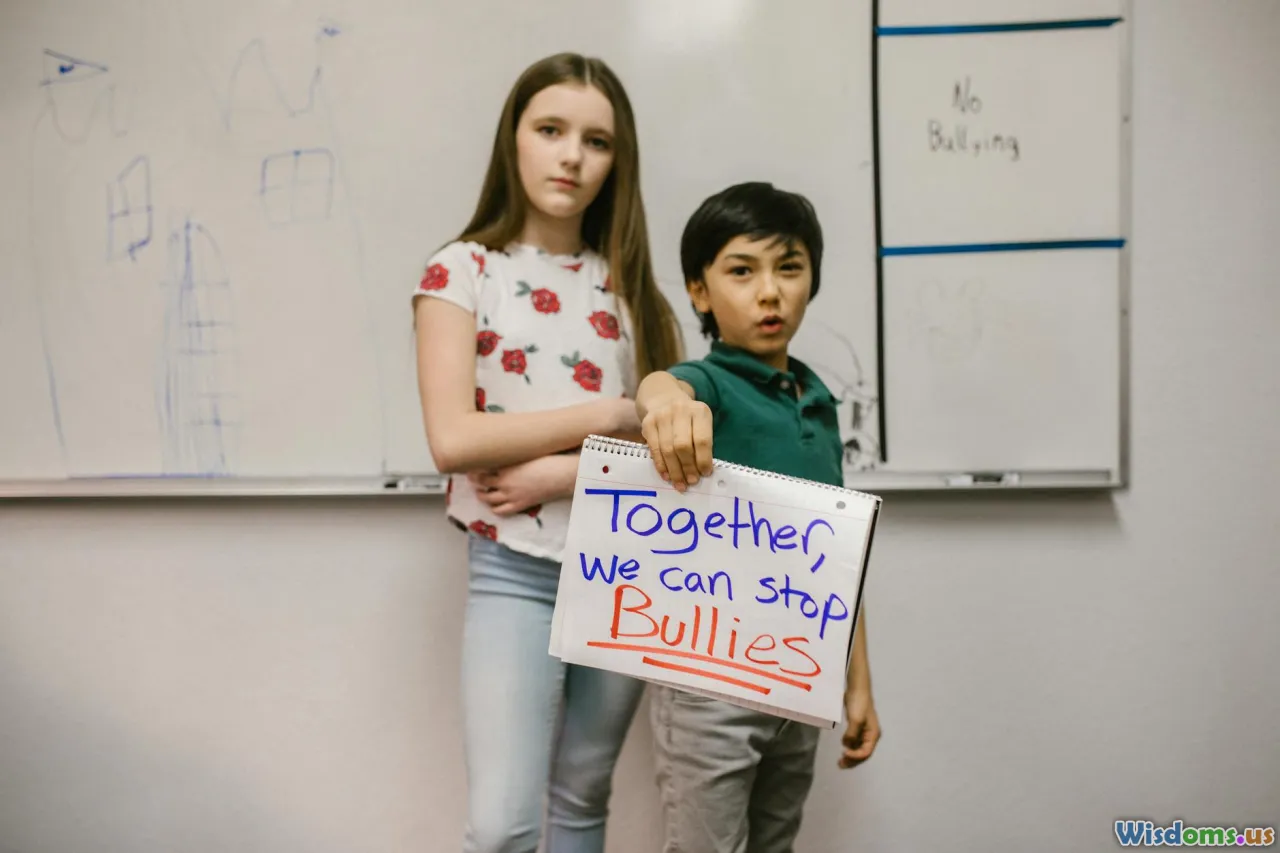
Helping Your Child Overcome School Bullying Step by Step
13 min read Practical guidance for parents to help children overcome and prevent school bullying effectively. (0 Reviews)
Helping Your Child Overcome School Bullying Step by Step
School should be a safe space for learning, personal growth, and forming friendships. Yet, for many children, bullying turns it into a place of fear and anxiety. Parents can feel helpless, unsure about their next steps when a child is being bullied. The good news: with informed strategies and consistent support, you can empower your child to navigate and rise above bullying—one step at a time.
Understanding the Forms and Impact of Bullying

Before taking action, it’s essential to recognize what constitutes bullying and how it can affect your child. Bullying often manifests in several forms:
- Physical: Hitting, pushing, tripping, or damaging belongings.
- Verbal: Name-calling, insults, constant teasing, or threats.
- Social/Relational: Exclusion, spreading rumors, or purposeful embarrassment.
- Cyberbullying: Using digital platforms to intimidate, harass, or humiliate.
Research from the National Center for Educational Statistics (2020) reveals nearly 1 in 5 U.S. students age 12-18 report being bullied at school. Bullying can lead to anxiety, depression, poor performance, absenteeism, and low self-esteem. For example, a 2023 study showed children bullied online are twice as likely to experience depressive symptoms compared to those not bullied.
Recognizing the multifaceted nature of bullying is the first step. Sometimes, subtle acts like social exclusion or persistent sarcasm may be overlooked. Listen carefully and treat any reports seriously, even if they seem minor or infrequent.
Encouraging Open Communication: Building Trust

Children won’t always volunteer information about negative experiences at school—they may fear retaliation, feel embarrassed, or worry that parents will overreact. Establishing trust is crucial:
-
Create a Habit of Checking In: Make time daily to ask your child about their school life, friends, and how they feel. Avoid rapid-fire questions; instead, use open-ended prompts like, “Tell me about something fun or challenging today.”
-
Listen Patiently: Give your child space to share without interruption. Validate their feelings (“That sounds really tough. I can see why you'd be upset.”).
-
Avoid Blaming: Resist the urge to assign blame or insist your child ‘toughen up’. Instead, acknowledge their courage in opening up and reinforce that no one deserves to be bullied.
Case Study: Eight-year-old Mia hid her bullying experience until family pizza nights became a communication ritual, making her feel safe to disclose her feelings. Sometimes, children open up during car rides or bedtime when the environment feels informal.
Gathering the Facts and Documenting Incidents

Once your child reports bullying, get a clear understanding of what happened. Questions should focus on details, such as:
- “Who was involved?”
- “What exactly did they say or do?”
- “Where and when did it happen?”
- “Were there any witnesses?”
Maintain a written log of events, including dates, the nature of incidents, actions taken, and any outcomes. This journal can be pivotal when addressing the issue with school authorities or, if the situation escalates, law enforcement.
Tip: Encourage your child (age-appropriately) to record or draw what happened. Digital photos of physical evidence (damaged items, for example) bolster your documentation.
Teaching Assertiveness and Resilience

While every bullying scenario is unique, empowering your child with practical skills nurtures resilience:
-
Role-Playing Responses: Practice assertive but non-confrontational language. For example, “Please stop. I don’t like it,” or walking away and seeking help from a trusted adult. This rehearsal increases a child’s confidence, so reactions become instinctual if incidents recur.
-
Building Friendships: Encourage your child to foster supportive peer relationships. Bullies often target those they perceive as isolated.
-
Self-Care Strategies: Teach stress-reduction techniques like deep breathing or journaling. Praise your child's strengths and talents, building a sense of self-worth unrelated to peers' opinions.
For example, eleven-year-old Aiden joined a robotics club, where he found supportive friends; feeling valued made him less susceptible to bullying.
Value Add: Many schools offer social-emotional learning (SEL) programs. Inquire about these resources and encourage your child's participation.
Collaborating with School Authorities Effectively

Addressing bullying is a community effort, and schools are critical partners.
Steps for Productive Engagement:
-
Contact Teachers or Counselors First: Begin with those who interact most with your child. Set up a meeting, bring your event log, and seek their perspective.
-
Know School Policies: Review the school’s handbook or website for its bullying prevention policy. Bring specific references to your meeting.
-
Request an Action Plan: Collaboratively agree on next steps, such as increased adult supervision, moving seats, or facilitating peer mediation.
-
Follow Up: Set a date for a check-in. Communication should be continuous, not one-off.
Example: At Oakwood Elementary, a parent’s detailed journal led teachers to review security footage, confirming social bullying, and school counselors then provided support for all students involved.
Remember, stay respectful—even amid strong emotions. Most educators want the best for their students and may be unaware of the situation.
Empowering Your Child in the Digital Landscape

Cyberbullying is an increasing threat, with 59% of U.S. teens reporting being bullied or harassed online (Pew Research Center, 2022). Unlike in-person bullying, digital harassment can happen around the clock.
Guidelines to Foster Digital Resilience:
-
Establish Ground Rules: Set boundaries on screen time, social media usage, and the kinds of apps your child can access.
-
Open Dialogues About Online Behavior: Discuss what’s appropriate to share and what digital threats to look out for (e.g., impersonation, spreading private images, mean comments).
-
Teach Blocking and Reporting: Show your child how to block, mute, and report bullies on all the apps they use.
-
Preserve Evidence: Take screenshots of abusive messages. Save dates, usernames, and details. This helps authorities respond if needed.
Case Insight: When twelve-year-old Priya’s online harassment escalated, her parents documented the evidence and collaborated with both school IT and the social network provider, resulting in swift action and restored safety for Priya.
Seeking Professional and Community Resources

Sometimes bullying inflicts emotional wounds beyond what families and schools can address alone. If your child exhibits ongoing anxiety, mood changes, or reluctance to attend school, professional support can make all the difference.
-
School Counselors: Often trained in conflict resolution and can facilitate peer mediation or counseling groups.
-
Private Therapists: Particularly for severe trauma, consider a therapist who specializes in child and adolescent mental health.
-
Support Groups: Community groups (in-person or virtual) help children and parents realize they’re not alone. Organizations like StopBullying.gov and PACER’s National Bullying Prevention Center offer tools, advice, and local resource directories.
Important: If there are signs of self-harm, suicidal ideation, or your child’s safety is under immediate threat, contact appropriate crisis resources, such as the 988 Suicide & Crisis Lifeline.
Addressing the Emotional Aftermath and Fostering Recovery

Even after bullying stops, its effects sometimes linger. Ongoing support accelerates healing and builds resilience for the future.
Practical Steps:
-
Routine and Predictability: Structure helps your child feel safe. Maintain consistent routines at home, with engaging activities and supportive family interactions.
-
Reaffirm Strengths: Celebrate achievements, encourage hobbies, and surround your child with people who uplift them. Positive reinforcement counters the negative message from bullying.
-
Monitor and Adjust: Keep dialogue ongoing. Watch for signs your child is reliving trauma or facing new stressors.
Real-World Example: Sophia’s parents enrolled her in martial arts after a bullying episode. The confidence she gained from learning self-defense rippled into academics and friendships, turning her school experience around.
Cultivating a Bully-Free Culture: Going Beyond Immediate Solutions

Tackling individual cases is important, but a long-lasting solution rests in building cultures that reject bullying outright.
-
Model Empathy at Home: Teach your children about empathy and treat others with kindness—even in everyday interactions, like conversations about neighbors or public figures.
-
Advocate for School Initiatives: Encourage schools to run anti-bullying campaigns, implement inclusive curricula, feature kindness weeks, or adopt peer mentorship programs.
-
Promote Bystander Empowerment: Teach your child—and their friends—to speak out or seek help for others who are bullied. A culture of intervention starts with individuals.
Example: In 2021, Harmony School launched a “Bullying Prevention Student Task Force” where students devised their own anti-bullying pledges, leading to a drop in bullying-related incidents by 35% over the academic year.
Supporting a bullied child is a challenging journey, but with patience, structured action, and a loving home base, every family can help their child find safety, recover confidence, and become part of the larger movement creating lasting change in schools.
Rate the Post
User Reviews
Popular Posts

















